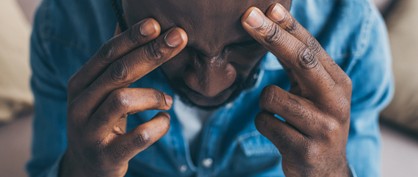My, Oh My, Oh Migraine!

By Merry Morris
There are few things more distressing to a migraine sufferer than the sneaking feeling that the pain is on its way. Sometimes a migraine announces itself with nausea, other times with vomiting, fatigue/yawning, mood changes, and sensitivity to light, motion, or sound. These symptoms are not unique to migraines, but there is one classic phenomenon: auras.
Light Shows You Don't Want to Attend
Auras can appear as flashing lights, bright squiggly lines, blind spots in your visual field, and even hallucinations. Regardless of how a migraine begins, the results can be debilitating. With symptoms so severe — throbbing pain (usually localized on one side of the head), nausea, vomiting, and light sensitivity — sufferers seek refuge in darkness, silence, and absolute stillness.
And the Lucky Winners Are ...
People between the ages of 50 and 60 often have fewer migraines, but those younger are not spared. In children, boys are more affected than girls; in adults, women experience migraines in much greater numbers — roughly three times that of men. Estimates suggest that a total of 39 million Americans suffer from this painful problem. Worldwide, it effects one billion people.
Unfortunately, the cause of migraines is unclear. For years it was believed that the neurotransmitters serotonin and dopamine provoke a flood of immune response cells to the brain causing its blood vessels to open wide and constrict, resulting in a pounding sensation. More recently, some doctors believe that genes contribute by affecting certain brain cells. The observation that migraines run in families supports this belief.
Become a Headache Detective
There’s currently no cure for migraines. Treatment ranges from simple measures like retreating to a dark, quiet room with a cold compress to over-the-counter pain relievers (acetaminophen) and non-steroidal anti-inflammatories (ibuprofen). Stronger prescription pain medications that affect blood vessels, betablockers, antidepressants, or anticonvulsants may be needed.
More invasive measures like neurostimulation, delivery of tiny pulses of energy to the thalamus, and deep-brain stimulation may be necessary in especially tough cases. Why these measures work is not known, but any effective and safe treatment will be greeted with excitement and, for sufferers, relief.
Migraines are triggered by a variety of things, including foods, stress, anxiety, depression, hunger, menstruation, flickering or fluorescent lights, and visual patterns. Keeping a daily diary of possible triggers and matching them to instances when migraines occur is one important way you can fight back. The detective work is not easy, but the results are apt to be greater than the effort.
Classroom Discussion
- If you were a researcher seeking a new treatment for migraines, how would you approach your search?
- Try keeping a diary for a few days. Take note of factors that might cause a migraine.

